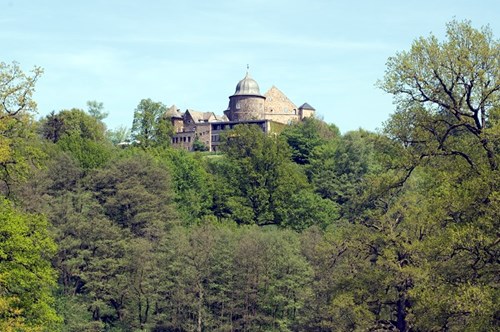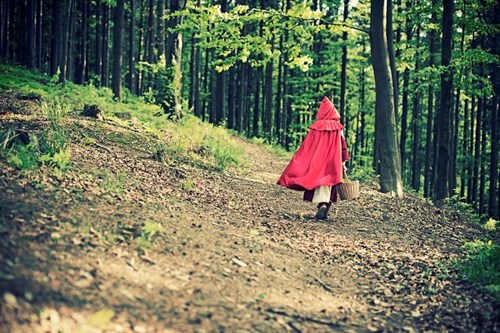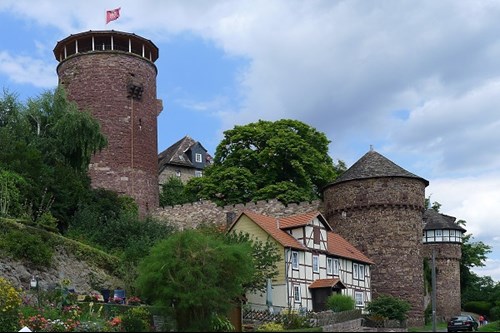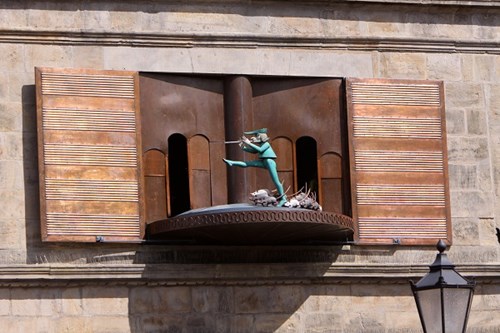Thanks to the Brothers Grimm, most of the fairytales that we know and love (and some that we Brits are unfamiliar with) have their roots in Germany. Far from the magical stories that are often airbrushed by Disney, the original tales tend to feature much darker themes and don’t always have a happy ending.
If you are interested in learning more about these famous fables, it’s possible to travel along the German Fairytale Route. This tourist trail stretches from Hanau, the birthplace of the Brothers Grimm, to Bremen in the north. Here are some of the towns featured on the route and the fairy tales you’ll discover there.
Ebergötzen

This small village just outside of Göttingen is the setting for a tale not written by the Brothers Grimm but by the famous 19th-century illustrator and poet, Wilhelm Busch. Busch penned the story of two young boys who would terrorise the village residents with a series of horrible pranks before, at the end of the story, they are ground into bits at the local mill and eaten by ducks.
The mill in question still stands today and is now a museum dedicated to milling and the story of Max and Moritz. A room holds many of the books published and a statue of the boys can be seen outside. Many aspects of the tale can be linked back to Ebergötzen and the people who lived there at the time.
For a start, it is thought that Wilhelm Busch modelled Max and Moritz on himself and the miller’s son, Erich Bachmann, with whom he struck up a great friendship. Although the two’s pranks were probably nowhere near as severe as those in the story (and they didn’t meet a gruesome death), a bridge like the one they vandalise in the book and a house like the one belonging to the widow who’s chickens they steal can still be seen close to the mill.
Hofgeismar

Whilst Disney is said to have used the stunning Neuschwanstein Castle as inspiration for their Sleeping Beauty castle, the Brothers Grimm are thought to have been influenced by Sababurg Castle for their version ‘Little Briar Rose’. In this recounting of the tale, the castle in which Sleeping Beauty is locked away is enveloped by a thick thorn bush that later turns to roses when the prince arrives.
Sababurg Castle was once a hunting lodge for the Landgrave of Hessen but was left empty at the beginning of the 19th century and became covered in foliage. Importantly, this included a rather large rose bush which, when discovered by locals eager to find the setting for the Brothers Grimm tale, was immediately compared to the events from the story.
Nowadays, the castle has been turned into a luxurious hotel and has been restored to its former glory with great attention to detail. Fairytale themed guided tours are offered by staff in fancy dress and there are even ‘an audience with Sleeping Beauty and the Prince’ events. The rose has also become a symbol for the hotel.
Schwalmstadt

Schwalmstadt is just one of the towns and villages in the Schwalm Valley, a beautiful part of Hesse that has been christened Little Red Riding Hood country. Many women (and some men) still wear the traditional outfit that would have inspired the Brothers Grimm’s depiction of the titular character of this particular fairy tale. It used to be the case that women would wear red to signify youth, green for young and married, purple for middle-aged, and black for elderly or mourning. Knowing this, it’s easy to see how Little Red Riding Hood came about; throw in the fact that wolves were once common in the forests surrounding Knüllwald and it becomes even more obvious.
The point is, though, that practically any of the wooded areas within the Schwalm Valley could be the setting for one of the most-loved fairy tales. There are plenty of popular hiking and cycling trails where visitors can go and explore and let their imaginations run wild. The nearby town of Neukirchen is also home to a Fairytale House, where famous scenes are depicted, and Ottrau-Weißenborn is where you’ll find the ancestral home of the Brothers Grimm themselves.
Trendelburg

It’s another castle that showcases Trendelburg’s link to the stories by the Brothers Grimm, and once you lay your eyes on one particular part, it will be obvious why. The tower at the corner of the courtyard has a little window in its side and is said to be the inspiration for the tale of Rapunzel.
Every Sunday, at 3pm, she makes an appearance and dangles her long, blonde hair down in the hope her prince will rescue her. The castle is now a fairytale hotel but you can still visit the grounds to retrace the story of Rapunzel.
Hamelin

Spelt Hameln in German, this town is just as famous as the mysterious Pied Piper who led the children from the streets like rats. Because of the specifics used in the Brothers Grimm tale, we know for sure that this is the setting for this rather bleak fable. We even know when it is said to have happened – 26th June 1284.
Since the story is such an important source of tourism, the town has gone all out to complete the picture, carrying on the theme in every way possible. The bakeries sell loaves of bread shaped like rats, the bars serve Rattenkiller cocktails, restaurants feature ‘roasted rats tales’ on the menu (don’t worry it’s just pork), and the symbol of the Pied Piper and the rat can be seen everywhere from windows to fountains and paving stones.
The tale itself is also retold in many ways throughout Hamelin. A glockenspiel starts up at 1:05pm, 3:35pm and 5:35pm, complete with metal figures that rotate in time to music and bells. Hamelin Museum has an animated version which you can watch, alongside many of the different written translations of the story that were produced around the world, many of which gloss over certain ‘difficult’ parts. Finally, and perhaps most interestingly, a live performance is staged every Sunday between May and September, in which children dress as rats and someone is specially chosen to play the Pied Piper every year.
There are many more fairy tales waiting to be discovered on the German Fairytale Route and we can help you visit any of them. For your tailor-made quote, call us on 0800 988 3369 or contact us via the website.










